
You’ve heard people telling you that you need to write in-depth content because that’s what Google wants.
And it’s true… the average page that ranks on page 1 of Google contains 1,890 words.
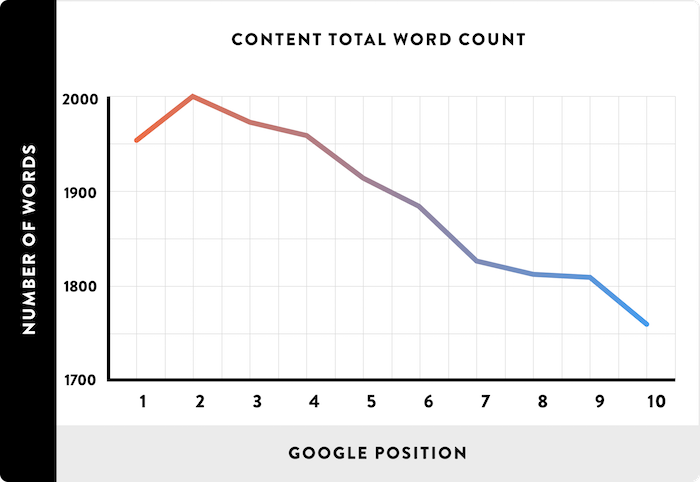
But you already know that.
The question is, should you be writing 2,000-word articles? 5,000? Or maybe even go crazy and create ultimate guides that are 30,000 words?
What’s funny is, I have done it all.
I’ve even tested out adding custom images and illustrations to these in-depth articles to see if that helps.
And of course, I tested if having one super long page with tens of thousands of words or having multiple pages with 4,000 or 5,000 words is better.
So, what do you think? How in-depth should your content be?
Well, let’s first look at my first marketing blog, Quick Sprout.
Short articles don’t rank well
With Quick Sprout, it started off just like any normal blog.
I would write 500 to 1,000-word blog posts and Google loved me.
Just look at my traffic during January 2011.
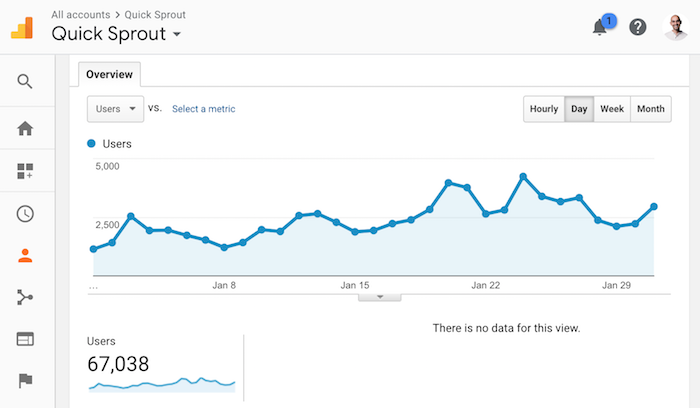
As you can see, I had a whopping 67,038 unique visitors. That’s not too bad.
Even with the content being short, it did fairly well on Google over the years.
But over time, more marketing blogs started to pop up, competition increased, and I had no choice but to write more detailed content.
I started writing posts that were anywhere from 1,000 to a few thousand words. When I started to do that, I was able to rapidly grow my traffic from 67,038 to 115,759 in one year.
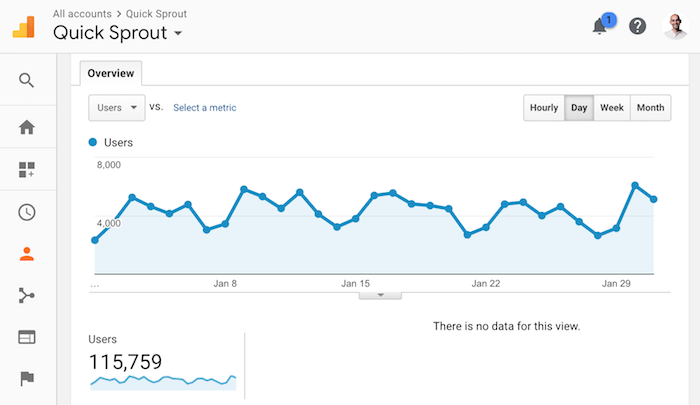
That’s a 72.67% increase in traffic in just 1 year.
It was one of my best years, and all I had to do was write longer content.
So naturally, I kept up with the trend and continually focused on longer content.
But as the competition kept increasing, my traffic started to stagnate, even though I was producing in-depth content.
Here are my traffic stats for November 2012 on Quick Sprout.
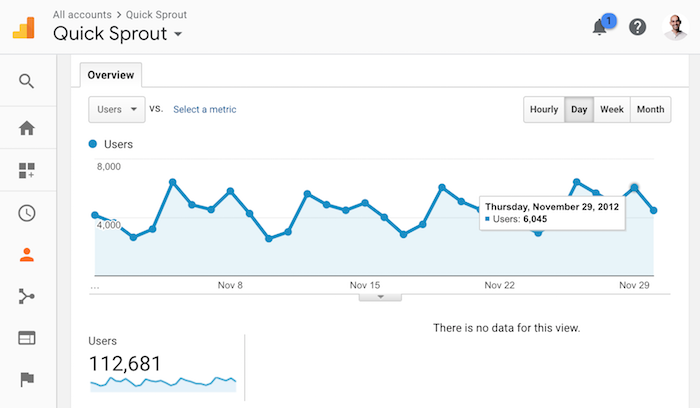
I understand that Thanksgiving takes place in November, hence traffic wasn’t as high as it could be. But still, there really wasn’t any growth from January to November of 2012.
In other words, writing in-depth content that was a few thousand words max wasn’t working out.
So what next?
Well, my traffic had plateaued. I had to figure something else out.
Writing longer, more in-depth content had helped me before… so I thought, why not try the 10x formula.
I decided to create content 10 times longer, better, and more in-depth than everyone else. I was going to the extreme because I knew it would reduce the chance of others copying me.
Plus, I was hoping that you would love it as a reader.
So, on January 24, 2013, I released my first in-depth guide.
It was called The Advanced Guide to SEO.
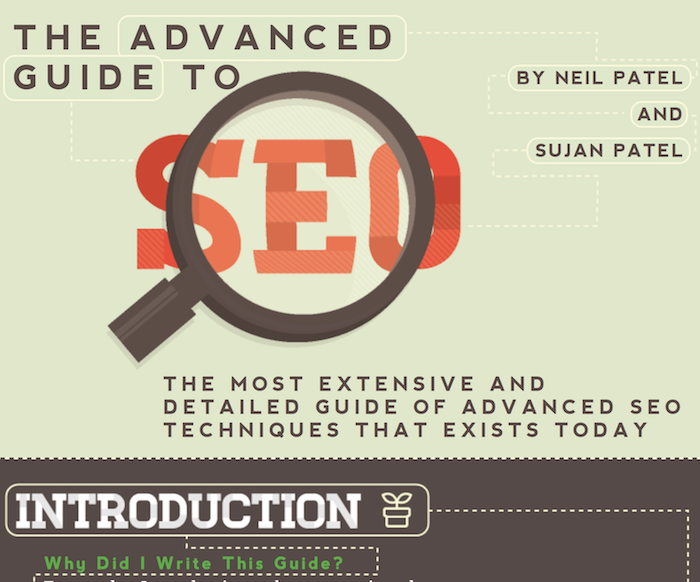
It was so in-depth that it could have been a book.
Literally!
Heck, some say it was even better than a book as I paid someone for custom illustration work.
Now let’s look at the traffic stats for January 2013 when I published the guide.
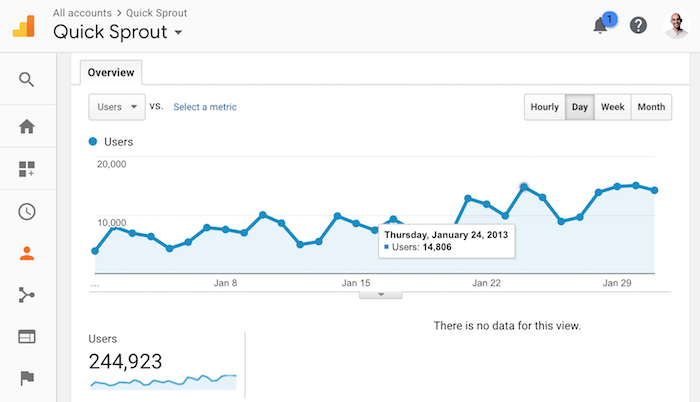
As you can see my traffic really started to climb again.
I went from 112,681 visitors in November to 244,923 visitors in January. Within 2 months I grew my traffic by 117%.
That’s crazy!!!!
The only difference: I was creating content that was so in-depth that no one else dared to copy to me (at that time).
Sure, some tried and a few were able to create some great content, but it wasn’t like hundreds of competing in-depth guides were coming out each year. Not even close!
Now, when I published the guide I broke it down into multiple chapters like a book because when I tested out making it one long page, it loaded so slow that the user experience was terrible.
Nonetheless, the strategy was effective.
So what did I do next?
I created 12 in-depth guides
I partnered up with other marketers and created over 280,000 words of marketing content. I picked every major subject… from online marketing to landing pages to growth hacking.
I did whatever I could to generate the most traffic within the digital marketing space.
It took a lot of time and money to create all 12 of these guides, but it was worth it.
By January of 2014, my traffic had reached all-time highs.
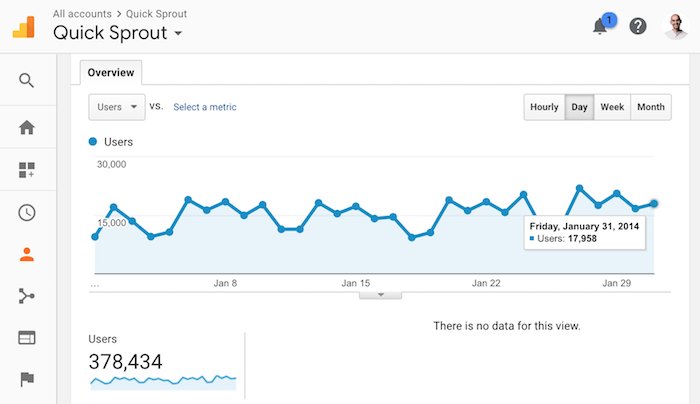
I was generating 378,434 visitors a month. That’s a lot for a personal blog on marketing.
Heck, that’s a lot for any blog.
In other words, writing 10x content that was super in-depth worked really well. Even when I stopped producing guides, my traffic, continually rose.
Here’s my traffic in January 2015:
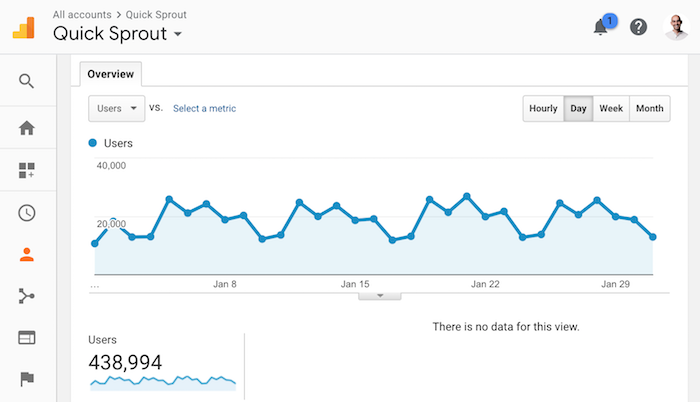
And here’s January 2016 for Quick Sprout:
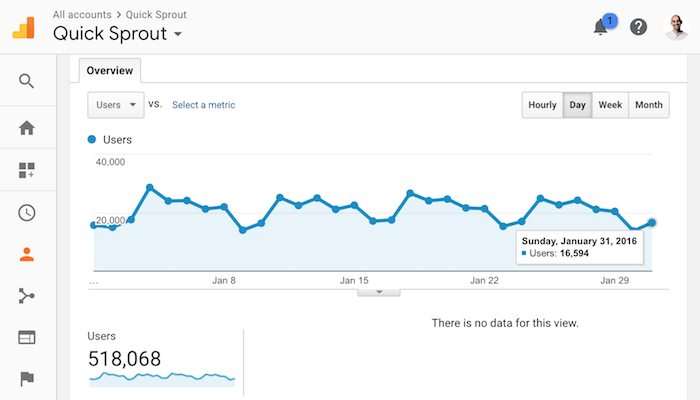
But over time something happened. My traffic didn’t keep growing. And it didn’t stay flat either… it started to drop.
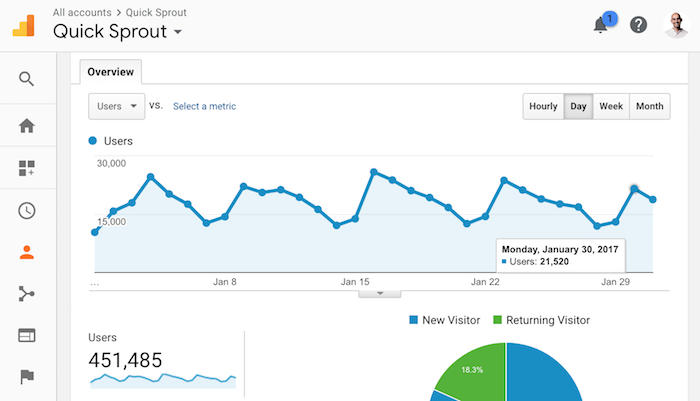
In 2017, my traffic dropped for the first time.
It went from 518,068 monthly visitors to 451,485. It wasn’t a huge drop, but it was a drop.
And in 2018 my traffic dropped even more:
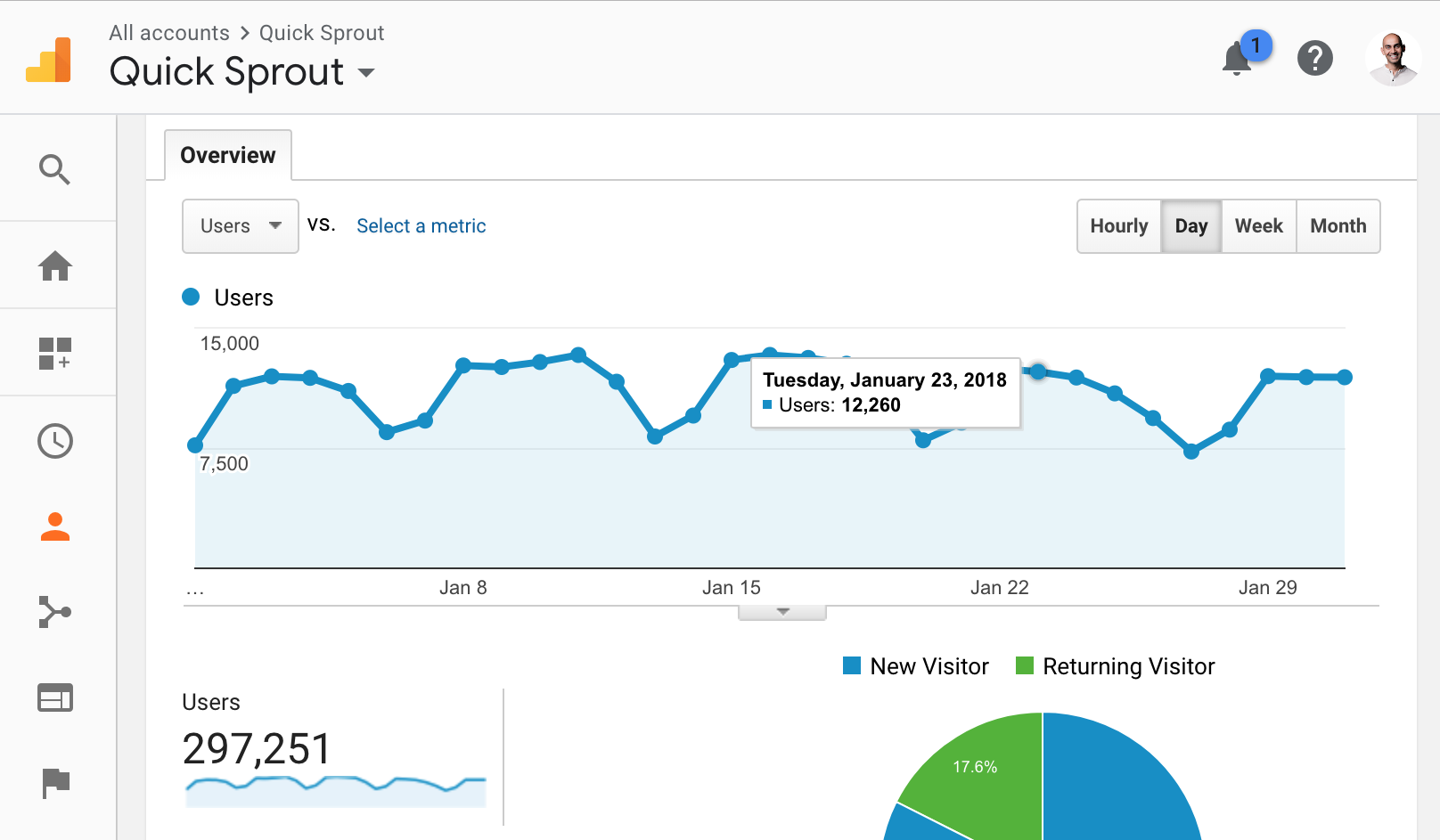
I saw a huge drop in 2018. Traffic went down to just 297,251 monthly visitors.
And sure, part of that is because I shifted my focus to NeilPatel.com, which has become the main place I blog now.
But it’s largely that I learned something new when building up NeilPatel.com.
Longer isn’t always better
Similar to Quick Sprout, I have in-depth guides on NeilPatel.com.
I have guides on online marketing, SEO, Google ads, Facebook ads, and the list goes on and on.
If you happened to click on any of the guides above you’ll notice that they are drastically different than the ones on Quick Sprout.
Here are the main differences:
- No fancy design – I found with the Quick Sprout experience, people love the fancy designs, but over time content gets old and outdated. To update content when there are so many custom illustrations is tough, which means you probably won’t update it as often as you should. This causes traffic to go down over time because people want to read up-to-date and relevant information.
- Shorter and to the point – I’ve found that you don’t need super in-depth content. The guides on NeilPatel.com rank in similar positions on Google and cap out at around 10,000 words. They are still in-depth, but I found that after 10,000 or so words there are diminishing returns.
Now let’s look at the stats.
Here’s the traffic to the advanced SEO guide on Quick Sprout over the last 30 days:
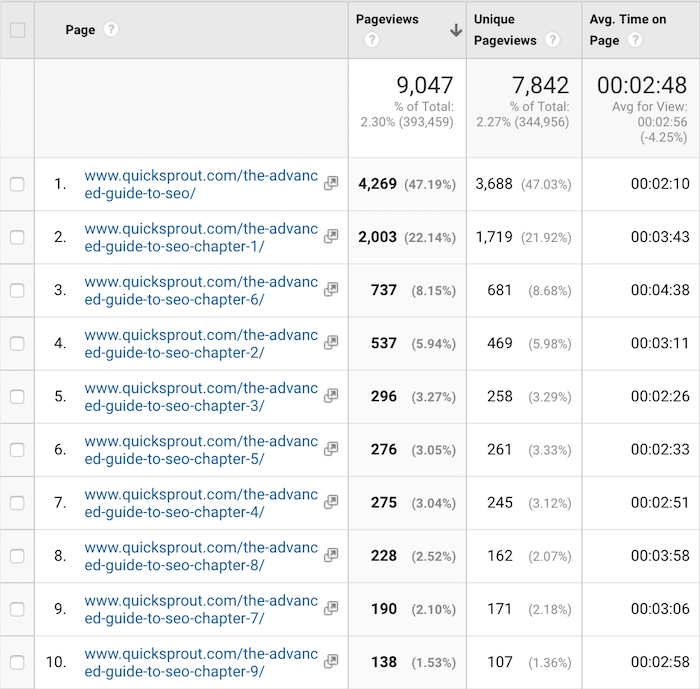
Over 7,842 unique pageviews. There are tons of chapters and as you can see people are going through all of them.
And now let’s look at the NeilPatel.com SEO guide:

I spent a lot less time, energy, and money creating the guide on NeilPatel.com, yet it receives 17,442 unique pageviews per month, which is more than the Quick Sprout guide. That’s a 122% difference!
But how is that possible?
I know what you are thinking. Google wants people to create higher quality content that benefits people.
So how is it that the NeilPatel.com one ranks higher.
Is it because of backlinks?
Well, the guide on Quick Sprout has 850 referring domains:
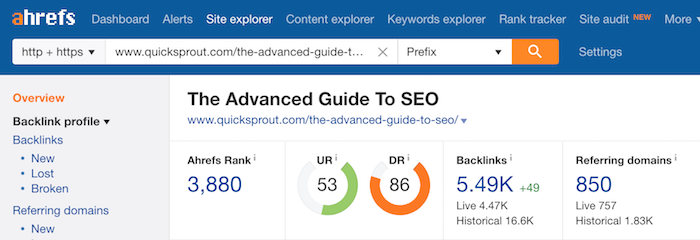
And the NeilPatel.com has 831 referring domains:
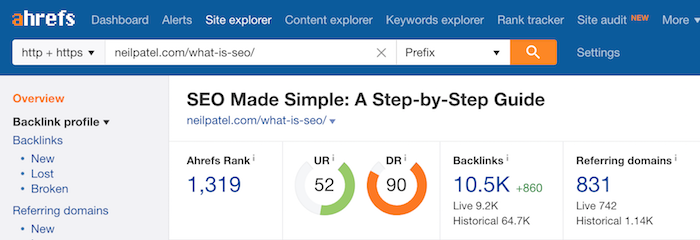
Plus, they have similar URL ratings and domain ratings according to Ahrefs so that can’t be it.
So, what gives?
Google is a machine. It doesn’t think with emotions, it uses logic. While we as a user look at the guide on Quick Sprout and think that it looks better and is more in-depth, Google focuses on the facts.
See, Google doesn’t determine if one article is better than another by asking people for their opinion. Instead, they look at the data.
For example, they can look at the following metrics:
- Time on site – which content piece has a better time on site?
- Bounce rate – which content piece has the lowest bounce rate?
- Back button – does the article solve all of the visitors’ questions and concerns? So much so they visitor doesn’t have to hit the back button and go back to Google to find another web page?
And those are just a few things that Google looks at from their 200+ ranking factors.
Because of this, I took a different approach to NeilPatel.com, which is why my traffic has continually gone up over time.
Instead of using opinion and spending tons of energy creating content that I think is amazing, I decided to let Google guide me.
With NeilPatel.com, my articles range from 2,000 to 3,000 words. I’ve tried articles with 5,000+ words, but there is no guarantee that the more in-depth content will generate more traffic or that users will love it.
Now to clarify, I’m not trying to be lazy.
Instead, I’m trying to create amazing content while being short and to the point. I want to be efficient with both my time and your time while still delivering immense value.
Here’s the process I use to ensure I am not writing tons of content that people don’t want to read.
Be data driven
Because there is no guarantee that an article or blog post will do well, I focus on writing amazing content that is 2,000 to 3,000-words long.
I stick within that region because it is short enough where you will read it and long enough that I can go in-depth enough to provide value.
Once I release a handful of articles, I then look to see which ones you prefer based on social shares and search traffic.
Now that I have a list of articles that are doing somewhat well, I log into Google Search Console and find those URLs.
You can find a list of URLs within Google Search Console by clicking on “Search Traffic” and then “Search Analytics”.
You’ll see a screen load that looks something like this:
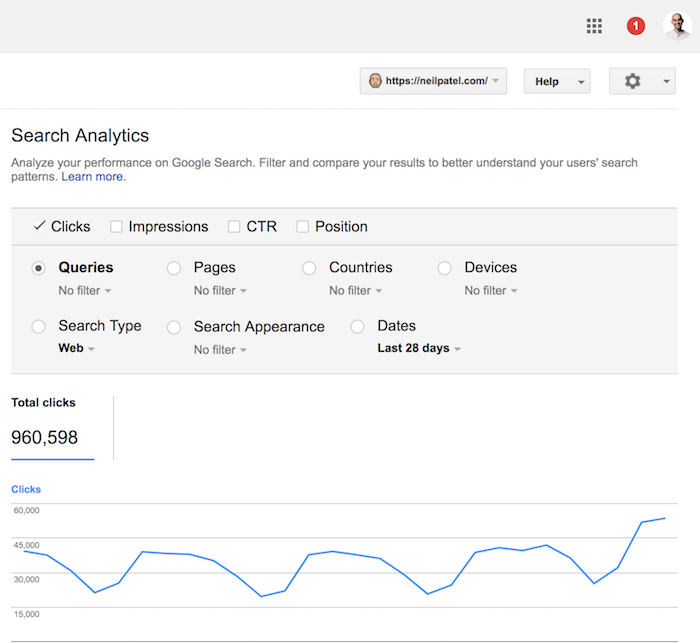
From there you’ll want to click on the “pages” button. You should be looking at a screen that looks similar to this:

Find the pages that are gaining traction based on total search traffic and social shares and then click on them (you can input URLs into Shared Count to find out social sharing data).
Once you click on the URL, you’ll want to select the “Queries” icon to see which search terms people are finding that article from.
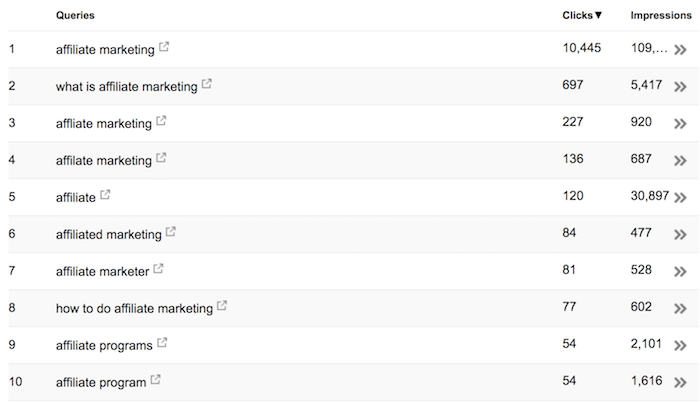
Now go back to your article and make it more in-depth.
And when I say in-depth, I am not talking about word count like I used to focus on at Quick Sprout.
Instead, I am talking depth… did the article cover everything that the user was looking for?
If you can cover everything in 3,000 words then you are good. If not, you’ll have to make it longer.
The way you do this is by seeing which search queries people are using to find your articles (like in the screenshot above). Keep in mind that people aren’t searching Google in a deliberate effort to land on your site… people use Google because they are looking for a solution to their problem.
Think of those queries that Google Search Console is showing you as “questions” people have.
If your article is in-depth enough to answer all of those questions, then you have done a good job.
If not, you’ll have to go more in-depth.
In essence, you are adding more words to your article, but you aren’t adding fluff.
You’re not keyword stuffing either. You are simply making sure to cover all aspects of the subject within your article.
This is how you write in-depth articles and not waste your time (or money) on word count.
And that’s how I grew NeilPatel.com without writing too many unnecessary words.
Conclusion
If you are writing 10,000-word articles you are wasting your time. Heck, even articles over 5,000 words could be wasting your time if you are only going after as many words as possible and adding tons of fluff along the way.
You don’t know what people want to read. You’re just taking a guess.
The best approach is to write content that is amazing and within the 2,000-word to 3,000-word range, assuming you’re in a competitive industry. If your industry isn’t as competitive (and it lacks content online) then you can get away with posts under 1,000 words.
Once you publish the content, give it a few months and then look at search traffic as well as social sharing data to see what people love.
Take those articles and invest more resources into making them better and ultimately more in-depth (in terms of quality and information, not word count).
The last thing you want to do is write in-depth articles on subjects that very few people care about.
Just look at the Advanced Guide to SEO on Quick Sprout… I made an obvious mistake. I made it super in-depth on “advanced SEO”. But when you search Google for the term “SEO” and you scroll to the bottom to see related queries you see this…
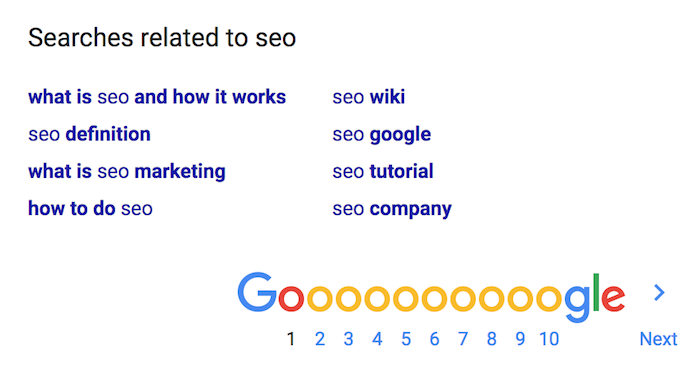
People are looking for the basics of SEO, not advanced SEO information.
If I wrote a 2,000-word blog post instead of a 20,000-word guide, I could have caught this early on and adapted the article more to what people want versus what I thought they wanted.
That’s a major difference.
So how in-depth are you going to make your content?
No comments:
Post a Comment